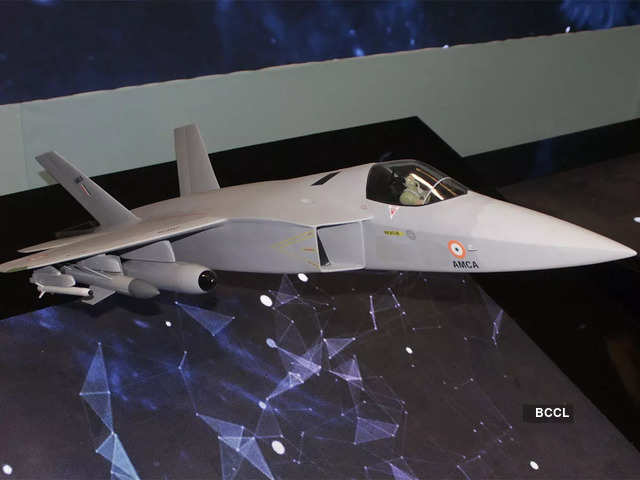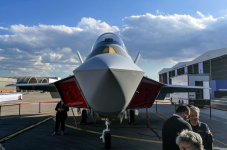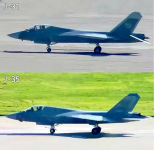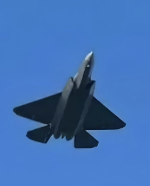GriffinsRule
Moderator
- Nov 17, 2015
- 3,652
- 5,360
- Country of Origin

- Country of Residence

Live up to your username and I will be glad to ban you from threadsGOod luck with chinese jet
Follow along with the video below to see how to install our site as a web app on your home screen.
Note: This feature may not be available in some browsers.


Live up to your username and I will be glad to ban you from threadsGOod luck with chinese jet


Cute.GOod luck with chinese jet





The J-31 is a dual engine aircraft, so it's closer to the F-22 raptor, the F-35 is a single engine aircraft. The J-31 actually looks almost identical to the F-22 raptor, can china canot built a powerful engine like from the f35. Just an observation by me I hope I’m wrong on this and get corrected by someone.
Not sure why notWill the PAF fly 2 twin engine fighter jets (J31 and KAAN) or will they go for
single engine KAAN?


The short answer is, yes, the J-31/35 supposedly will get an engine that will allow it to reach the set flight performance criteria, the WS-19, giving the jet similar thrust to weight ratio, transonic-supersonic performance and supercruise ability.The J-31 is a dual engine aircraft, so it's closer to the F-22 raptor, the F-35 is a single engine aircraft. The J-31 actually looks almost identical to the F-22 raptor, can china canot built a powerful engine like from the f35. Just an observation by me I hope I’m wrong on this and get corrected by someone.


Hi,Hi,
Real issue is to understand which chinese aircraft meets Paf's need and not what is available to the Paf or not.
The J-20 is a different kind of aircraft with a different utility that is a bit farther away from that of the J-31 that meets the needs of the Paf---.
If the J-20 was the aircraft that the Paf had wanted---then that is what we would see in Paf's colors---.
I remember the days when all we saw of the J-20 and J-31 were vague drawings and sketches. It was so abstract back then as America was the only country with stealth aircraft. Imaging anyone else with that tech - much less China - was at best a distant possibility for some, and a joke for most.Hi,
Have any of you have considered some of the following---!!!!
Something very important to understand is that Rafales capabilities are somewhat know---but those of the JF17 BLK 3 are up in the air and same with the J-10C's as well.
Most of us can only speculate on the potency of the systems in these 2 aircraft or what the Paf wants us to know---.
And now to add the J-31 to the group---Paf has created a massive concern in the opponents camp---. They are behind in the upgrades of 100's of their aircraft---.
Upgrades mean---integration---training training training---. Older pilots to be re-trained to newer equipment---older tech need to be re-trained on newer equipment---and that is all time consuming.
I think that the opponents air force is in a quandry---. They will be playing catchup in the next 15-20 years---.
@Quwa


Hi,I remember the days when all we saw of the J-20 and J-31 were vague drawings and sketches. It was so abstract back then as America was the only country with stealth aircraft. Imaging anyone else with that tech - much less China - was at best a distant possibility for some, and a joke for most.
Now, here we are... We're in a world where the reality of China being an industrial superpower (with R&D expertise, funding, and scale) is as true as the water in the sea. With a complete supplier at its doorstep, Pakistan is, understandably, leveraging them...
tbh...it's out of my area of knowledge...I can only guess...Hi,
I want your input on upgrade / transition to aesa---integration & re-training pilots on aesa for the opponents force---.


Its not the radar - although there is some very different ways to use AESAs in terms of SA building and how you can break up close knit formations.tbh...it's out of my area of knowledge...I can only guess...
I guess that, for the pilot, using an AESA radar isn't fundamentally any different than a pulse-Doppler one. Yes, they have more range, more simultaneous targeting, and better resilience to ECM.
However, these are all performance features that make the radar (for the end-user or pilot) better, but there's no change in how you use the radar, at least in air-to-air.
I suppose some new features are available, like 'chirping' (using different beam-groupings of TRMs for different tasks at the same time). That's one new thing the operator has to get used to, may be useful when trying to identify both air and surface-based targets, especially at sea.
The bigger change is at a higher level, i.e., when you're integrating those AESA radars into your wider sensor stack. Each fighter radar is a lot more powerful now. In this case, you may want to lean harder into a network, e.g., keeping one fighter's radar active (and feeding its sensor feed to other fighters via data-link), while the other fighters just keep passive sensors on, like IRST.
I think this is likely the biggest change, but it may require investing in new passive sensors (like IRST) to fully leverage. Perhaps the J-10CEs are now helping the PAF understand IRST better and, in turn, push them to add it to the JF-17s. I






The short answer is, yes, the J-31/35 supposedly will get an engine that will allow it to reach the set flight performance criteria, the WS-19, giving the jet similar thrust to weight ratio, transonic-supersonic performance and supercruise ability.
The long answer is, maximum thrust alone is actually a very flawed way of evaluating how an engine would perform. The F-35's F135 engine actually have an identical gas generator as F-22's F119, aka core compressor-combustor-turbine section. But this doesn't mean F-35 only have half the thrust that F-22 does. How does that happen?
One of the key ways that F119 and F135 differs is the "Bypass ratio". It's difficult to explain in short texts, but they key takeaway is this, you can either give the engine greater maximum thrust, but as altitude and velocity increases the engine starts to lose thrust earlier, making the aircraft better at subsonic ranges, or you can have the engine more geared toward high alt high speed, even though it would have less raw thrust.
The F-35 is built as a supplement strike fighter (hence Joint Strike Fighter JSF), using stealth and powerful anti-surface weaponry capacity to exploit the aerial dominance established by F-22, usually limited to lower altitude and subsonic ranges performing air support or air patrols; while J-31/35 leans more toward the F-22 as a traditional air superiority fighter.
Will the PAF fly 2 twin engine fighter jets (J31 and KAAN) or will they go for
single engine KAAN?


I thought we were going down the turkey route?
